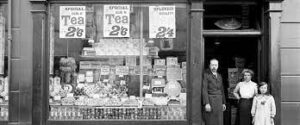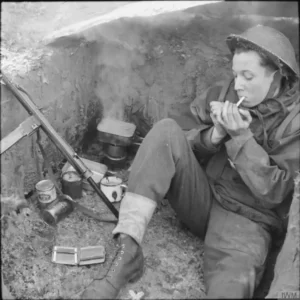#NationalTeaDay
Forgotten Friday – Keep Calm & Brew Up
In this week’s #ForgottenFriday we are delving into a Cuppa’ Tea and learning about how tea was rationed during the war!
One example captures how deeply tea drinking was embedded in the fabric of British everyday life than the decision of the government in 1942 to buy up every available pound of tea from every country in the world except Japan.

Britain faced possible defeat by the Axis powers of Germany and Japan. Its troops had been forced to make a complete withdrawal from Europe, leaving it open to an expected and narrowly avoided invasion. The “impregnable” fortress of Singapore had fallen, essentially ending Britain’s colonial dominance of Asia. Britain’s reserves were drained to keep imports flowing in as Atlantic convoys were hunted and often destroyed by U-boats. The US had not yet mobilized its massive manufacturing capabilities, post Pearl Harbour in 1941.
One estimate is that the largest government purchases in 1942 were, in order of weight, bullets, tea, artillery shells, bombs and explosives.
The German High Command fully understood the importance of disrupting the tea chain. One of the primary targets for the sustained bombing of London in 1941, known as the Blitz, was Mincing Lane, “The Street of Tea.” This had been the centre for the opium trade that pumped masses of the drug into China to obtain the silver that was the only currency the Chinese government would accept for purchase of tea: feeding an addiction to fund an addiction.

Mincing Lane did not store tea but was the repository for just about all the records of 30 million tonnes of stocks, trades and finances destroyed by the bombing. That is when the government moved into action. Almost all foods and clothing items were rationed; this lasted until 1954. The weekly allowance was two ounces of butter and cheese, eight of sugar, four of bacon. And two ounces of tea, enough to make three cups a day, a far less stringent ration than cheese.
One historian summarised tea as Britain’s secret weapon in the War. It was certainly one of its most visible symbols of national unity. Like such patriotic images, there were many strands of sentimentality and myth in the stories of how tea was a social binding force in the days of the London Blitz where, night after night, fires blazed from bombed buildings, women and children huddled in the underground railway tunnels and the air raid sirens were a daily threnody.
That said, tea was powerful symbolically and practically. Churchill is reputed to have called tea more important than ammunition. He ordered that all sailors on ships have unlimited tea.

Its perceived value in boosting morale not just in Britain is illustrated by the Royal Air Force dropping 75,000 tea bombs in a single night over the occupied Netherlands. Each contained one-ounce bags of tea from the Dutch East Indies and was marked “The Netherlands will rise again. Chins up.” Every one of the 20 million Red Cross packages sent to prisoners of war contained a quarter pound package of Twinings.[1]
We all know the importance of morale and emotion during the war, and tea was a huge contribution to this!

